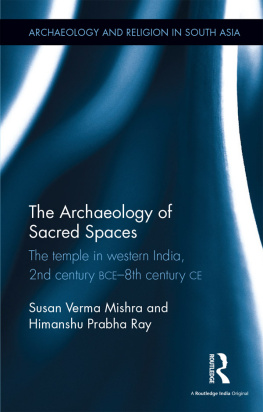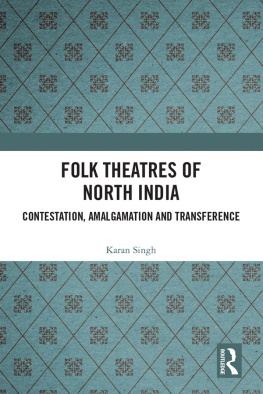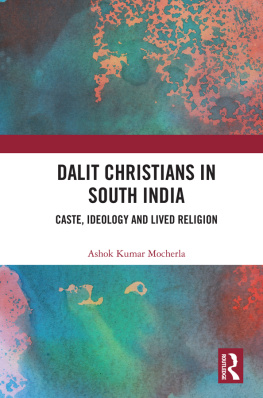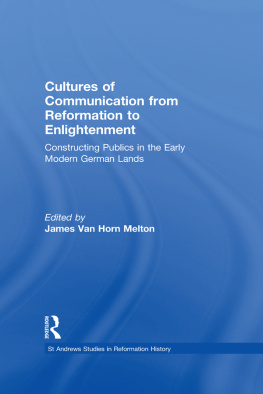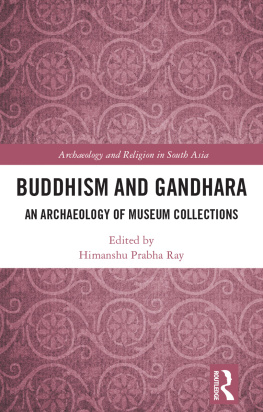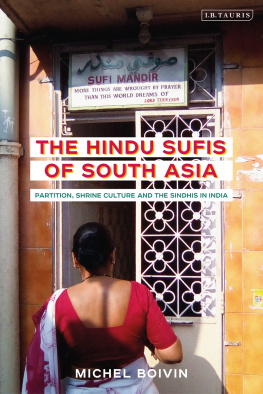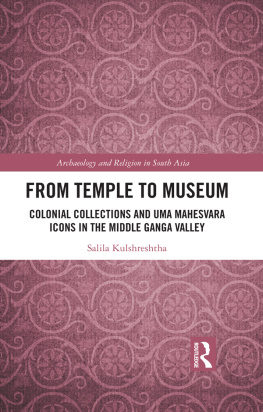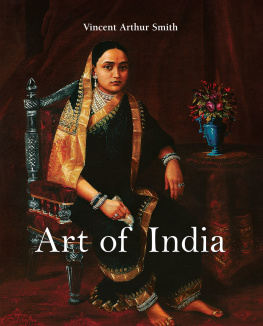The Archaeology of Sacred Spaces
This volume focuses on the religious shrine in western India as an institution of cultural integration in the period spanning 200 BCE to 800 CE. It presents an analysis of religious architecture at multiple levels, both temporal and spatial, and distinguishes it as a ritual instrument that integrates individuals and communities into a cultural fabric. The work shows how these structures emphasise communication with a host of audiences, such as the lay worshipper, the ritual specialist, royalty and the elite, as well as the artisan and the sculptor. It also examines religious imagery, inscriptions, traditional lore, and Sanskrit literature.
The book will be of special interest to researchers and scholars of ancient Indian history, Hinduism, religious studies, architecture, and South Asian studies.
Susan Verma Mishra is Project Associate, Indira Gandhi National Centre for the Arts (IGNCA), New Delhi, India.
Himanshu Prabha Ray is Chairperson, Academic Committee, Project Mausam, Indira Gandhi National Centre for the Arts, New Delhi, India. She is Honorary Professor, Distant Worlds, Munich Graduate School of Ancient Studies, Ludwig Maximilian University, Munich, Germany, and Research Fellow, Oxford Centre for Hindu Studies, Oxford, UK.
Archaeology and Religion in South Asia | 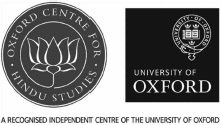
|
Series Editor: Himanshu Prabha Ray, Former Chairperson, National Monuments Authority; and Research Fellow, Oxford Centre for Hindu Studies
Editorial Board: Gavin Flood, Former Academic Director, Oxford Centre for Hindu Studies; Jessica Frazier, Academic Administrator, Oxford Centre for Hindu Studies; Julia Shaw, Institute of Archaeology, University College, London; Shailendra Bhandare, Ashmolean Museum, Oxford; Devangana Desai, Asiatic Society, Mumbai; Vidula Jaiswal, Jnana Pravaha, Varanasi, former professor, Banaras Hindu University.
This series, in association with the Oxford Centre for Hindu Studies, reflects on the complex relationship between religion and society through new perspectives and advances in archaeology. It looks at this critical interface to provide alternative understandings of communities, beliefs, cultural systems, sacred sites, ritual practices, food habits, dietary modifications, power, and agents of political legitimisation. The books in the Series underline the importance of archaeological evidence in the production of knowledge of the past. They also emphasise that a systematic study of religion requires engagement with a diverse range of sources, such as inscriptions, iconography, numismatics, and architectural remains.
Also in this series:
Negotiating Cultural Identity
Landscapes in Early Medieval South Asian History
Edited by Himanshu Prabha Ray
Women and Monastic Buddhism in Early South Asia
Garima Kaushik
The Archaeology of Sacred Spaces
The temple in western India, 2nd century BCE8th century CE
Susan Verma Mishra and Himanshu Prabha Ray

First published 2017
by Routledge
2 Park Square, Milton Park, Abingdon, Oxon OX14 4RN
and by Routledge
711 Third Avenue, New York, NY 10017
Routledge is an imprint of the Taylor & Francis Group, an informa business
2017 Susan Verma Mishra and Himanshu Prabha Ray
The right of Susan Verma Mishra and Himanshu Prabha Ray to be identified as authors of this work has been asserted by them in accordance with sections 77 and 78 of the Copyright, Designs and Patents Act 1988.
All rights reserved. No part of this book may be reprinted or reproduced or utilised in any form or by any electronic, mechanical, or other means, now known or hereafter invented, including photocopying and recording, or in any information storage or retrieval system, without permission in writing from the publishers.
Trademark notice: Product or corporate names may be trademarks or registered trademarks, and are used only for identification and explanation without intent to infringe.
British Library Cataloguing-in-Publication Data
A catalogue record for this book is available from the British Library
Library of Congress Cataloging-in-Publication Data
A catalog record has been requested for this book
ISBN: 978-1-138-67920-7 (hbk)
ISBN: 978-1-315-56333-6 (ebk)
Typeset in Times New Roman
by Apex CoVantage, LLC
Contents
All figures are by Susan Verma Mishra. Maps included are historical in nature and do not indicate the international boundary of India.
All tables are by Susan Verma Mishra. Maps included are historical in nature and do not indicate the international boundary of India.
T his book has almost been fifteen years in the making. Research on the theme of early temples of Saurashtra started as early as 2000, when Susan Verma Mishra joined the MPhil programme of the Centre for Historical Studies, Jawaharlal Nehru University (JNU), New Delhi, India, under the supervision of Himanshu Prabha Ray. Mishras studies on the archaeology of early Gujarat finally culminated in the award of a PhD degree in 2007. Travel grants from the Indian Council for Historical Research supported field trips to many of the sites discussed in this book. Presentations of papers at several conferences resulted in valuable feedback on ongoing research, especially at a workshop on Archaeology as History in Early South Asia, held in New Delhi in March 2002, which was sponsored jointly by the United States Educational Foundation in India and the Indian Council for Historical Research. Susan Verma Mishra would like to express her thanks to her parents and husband for support, both during the research programme at JNU, as also as an independent researcher subsequently.
Himanshu Prabha Ray continued her research on early temples as a faculty member at JNU, and also, as Research Fellow at the Oxford Centre for Hindu Studies in 2007 and as Quebec-India Visiting Professor at Concordia University, Montreal, in 2008. A research grant from JNU under the UPOE (University with Potential of Excellence) Scheme enabled her to undertake fieldwork in north Karnataka as also to collaborate with Dr Sudha Ravindranath of Indian Space Research Organization, Bengaluru for use of remote sensing images in the study of early religious architecture. Subsequently, she coordinated a conference and the papers from the conference were edited and published under the title, Archaeology and Text: The Temple in South Asia (2010). She is thankful to the National Monuments Authority, Ministry of Culture, which she joined as Chairperson in 2012, for facilitating her travel to Gujarat to study early temples in 2014.
Both the authors express their gratitude to the anonymous reader for very useful comments on the manuscript and to Routledge for accepting the publication of the book.
Experts call all places where immortals and mortals dwell, dwelling places (vstu). I present their different varieties, which are four in number: Earth (

